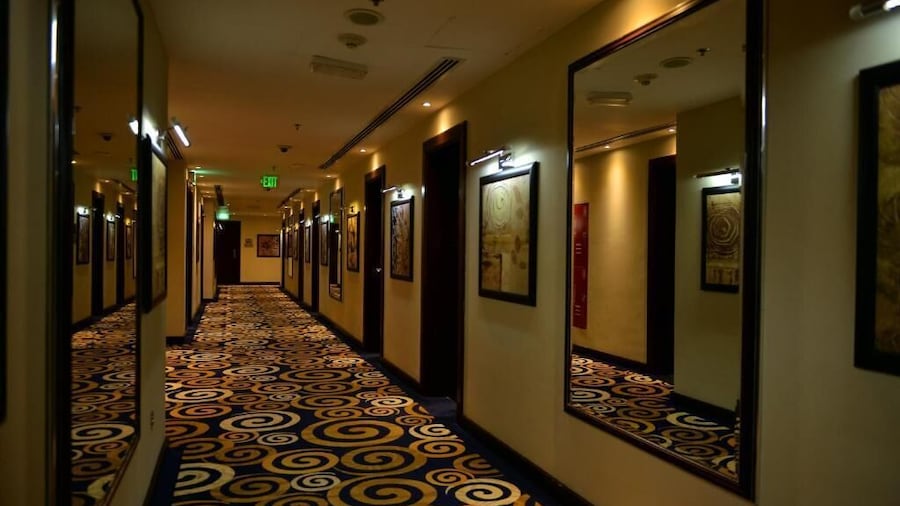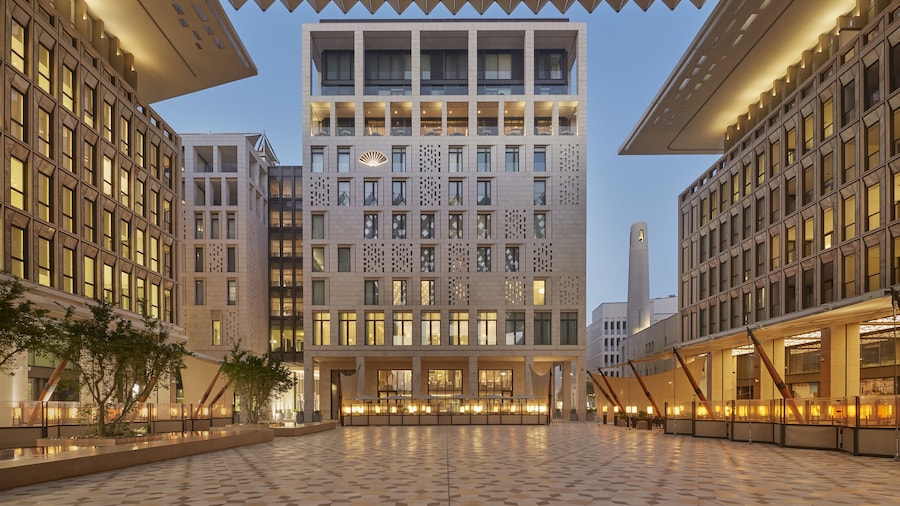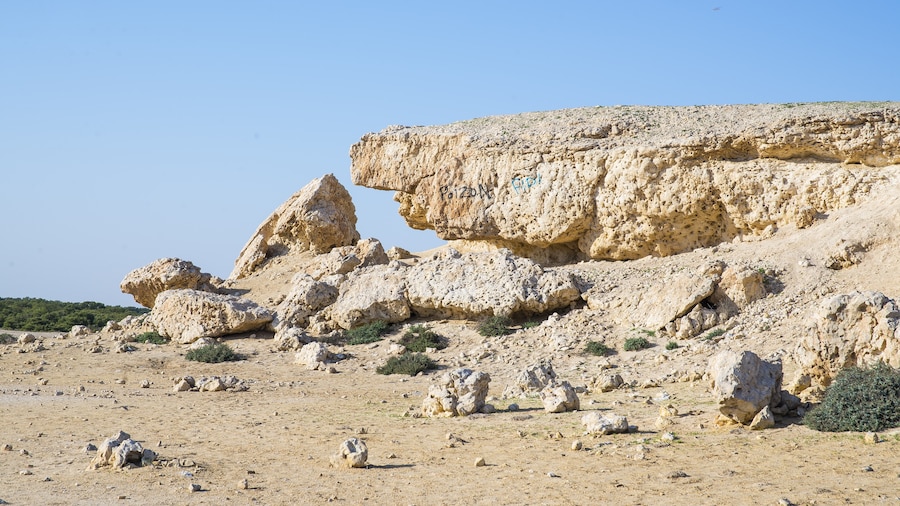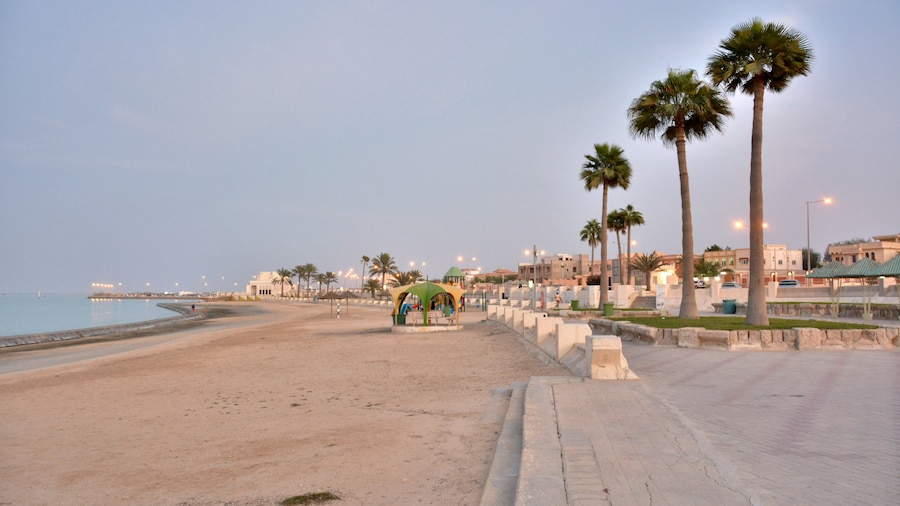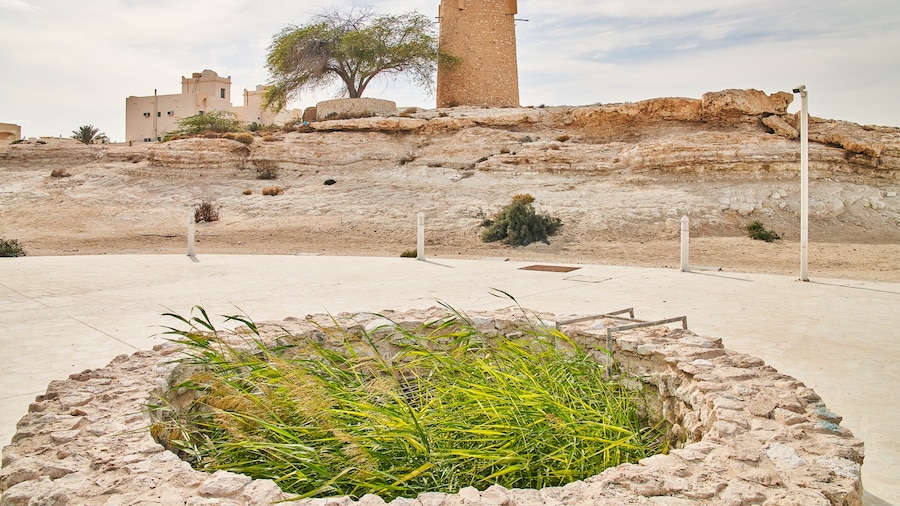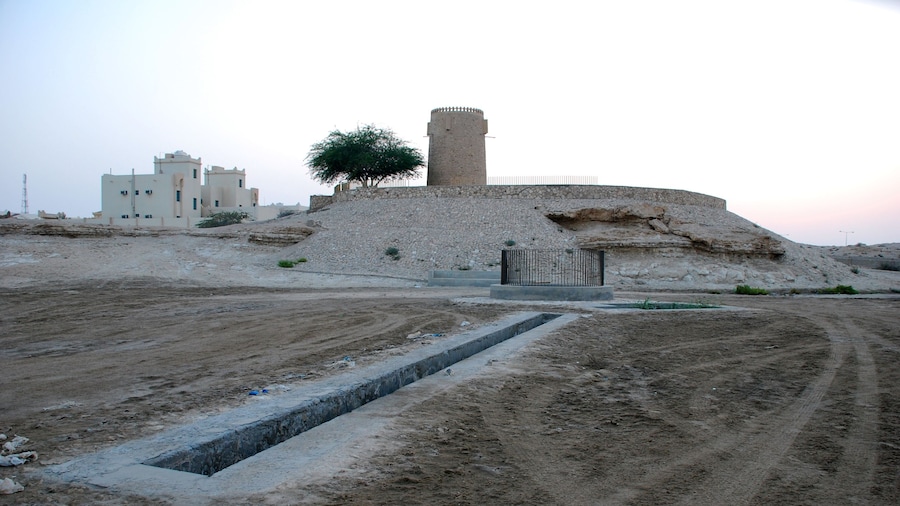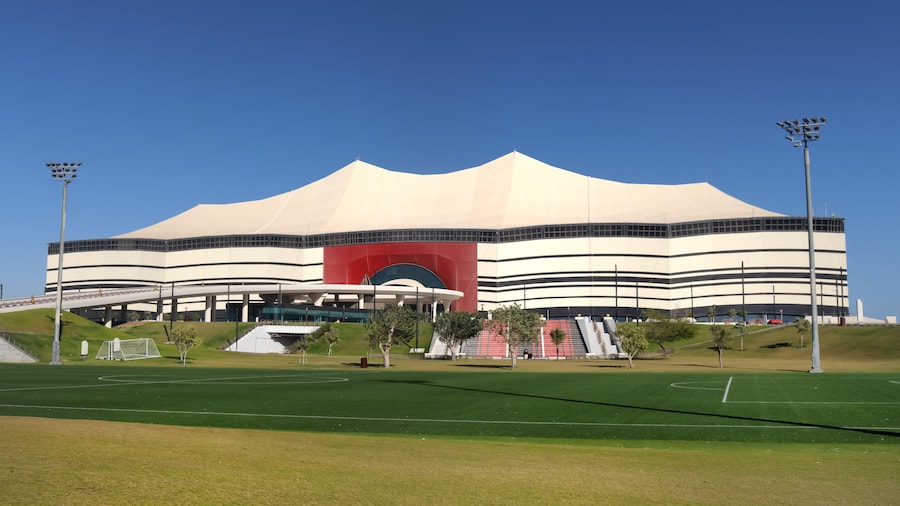As you kayak between trees rising just off the shore north of Al Khor, think of the many pencil roots of the plants hiding below the water’s surface.
The Al Thakira mangroves are likely not what most visitors think of when they plan to visit Qatar. In this largely desert nation with tall skyscrapers dominating the modern city of Doha, the mangroves north of the city offer a fascinating and unexpected contrast. Make the short drive to the area to learn about this type of tree and explore a unique ecosystem.
Qatar’s white or gray mangroves, known as the Avicennia marina, have adapted to the ecosystem here of intense desert heat and salty water supply. In fact, the trees seem to thrive on these harsh conditions. Paddle a kayak past the roughly 8-foot-tall (2.5-meter) trees whose lower leaves appear to float on the surface during high tide.
Visit the area during low tide to see pencil roots shooting up from the ground around each tree. These roots may grow radially well beyond the leafy growth of the top part of the mangrove. The roots have the function of drawing oxygen from the air to nourish the trees. Mangroves help to clean the air, filter metals from the ground and water and protect the shoreline.
Be completely still and watch for life in the mud around the upright roots. Small fish may be trapped in shallow pools waiting for the tide to allow them to return to the sea. Crabs often scurry across the silt. Flamingoes, terns, herons and other shore birds walk delicately, looking for food in the shallow water.
Drive to Al Thakira from Doha in less than 1 hour or from Al Khor in 10 minutes. Rent a kayak or join a guided paddling tour to travel north across the narrow channel to the Al Thakira mangroves reserve. Alternatively, drive another 20 minutes around the inlet to reach the reserve on land, with some portion requiring off-road travel.
When you visit the mangrove area, be especially careful where the trees may have any pencil roots. Walking on these relatively tender shoots or hitting them with kayak paddles can damage them, potentially killing the environmentally valuable tree.
